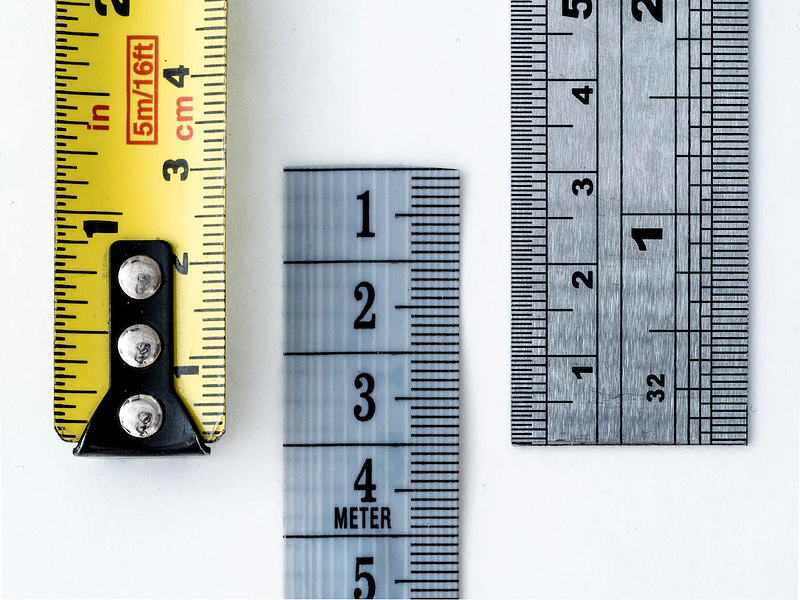Do you want your business to thrive and succeed? Of course, you do! And one of the most critical factors that can make or break your business is employee productivity. The efficiency of your employees has a direct impact on the success of your organization.
But it’s not just about the bottom line. Poor productivity can be a symptom of deeper issues, like burnout or disengagement. That’s why it’s crucial to measure and improve workplace productivity continuously. It’s an investment in your employees that will pay off in more ways than one.
In this article, we’ll explore the importance of measuring and increasing productivity in your workplace and provide you with strategies to help boost efficiency and employee engagement.
Throughout this article, we’ll discuss:
- What is Productivity in the Workplace?
- Why Must You Measure Employee Productivity?
- How to Measure Employee Productivity
- How to Increase Employee Productivity
- Tips to Improve Personal Productivity
- Wrap-up: Measure and Take Control of Your Workplace Productivity Today

What is Productivity in the Workplace?
Productivity in the workplace is the measure of how effectively an employee uses their time, resources, and talent to produce results. It’s a system that helps organizations identify areas where employees are struggling and those who are excelling.
Measuring productivity can also help managers understand what tasks employees find most challenging and prioritize accordingly. This data can be used to create better workflows and systems that allow employees to work more efficiently and with less stress.
The concept of productivity management and measurement is more important than ever in today’s remote work and work-from-home environment. Ensuring that employees are still productive and motivated when working remotely is essential.

Why Must You Measure Employee Productivity?
Measuring productivity offers organizations a variety of benefits, such as:
Improved Engagement and Morale
By measuring productivity, organizations can identify areas where employees are struggling and provide support to help them overcome challenges. This helps create a more positive work environment and increases employee engagement, satisfaction, and morale.
Productivity measurement also allows managers to reward staff members who are performing well by recognizing their efforts publicly or offering incentives for excellent performance. Rewarding the correct behavior encourages others in the team to emulate it, resulting in overall improved productivity within an organization.
Real-time productivity measurement is more necessary than ever in a remote work environment. This helps managers identify employees struggling with workload and provide support when needed. Advanced productivity measurement and time-tracking platforms like Day.io lets you see how your team spends their time, who is productive, and who needs help.
Identifying Areas for Improvement
Measuring productivity helps organizations identify areas where employees are underperforming. It allows managers to understand the tasks that are taking too long and why and pinpoint any resources or processes that should be improved. This data can then be used to create better workflows and strategies that help boost overall productivity.
Not only does this benefit the organization, but it also increases employee satisfaction by providing them with a more efficient system to work in. The result is increased engagement, morale, and motivation for all involved.
Making Smarter Decisions
Data-driven decisions are crucial for any organization that wants to succeed in today’s competitive landscape. Measuring employee productivity can provide the data to make smarter decisions and optimize processes.
For example, suppose an organization notices that specific tasks take too long or consume more resources than necessary. In that case, they can use its data to determine why and identify potential solutions. This helps them make better-informed decisions about allocating resources and improving overall efficiency.

Evaluating the Effectiveness of Strategies and Practices
Businesses need to continuously evaluate the effectiveness of their strategies and practices to ensure they are providing the best results possible. By measuring productivity, organizations can track their processes’ effectiveness and make necessary adjustments quickly.
Measuring productivity also helps managers understand what tasks employees find most challenging and prioritize accordingly. This data to evaluate employee productivity can be used to create better workflows and systems that allow employees to work more efficiently with less stress.
Cost Savings from Better Use of Resources
You can identify areas where resources are wasted by tracking your employees’ productivity. This helps you make better decisions about resource allocation and save costs in the long run.
For example, if an employee takes too long to complete a task, it could be because they lack the appropriate tools or training to do it effectively. Identifying this issue allows managers to provide additional resources or training that will help them maximize their time and increase overall productivity.
Increased Profitability
Maintaining a healthy ROI is one of the most important measures of success for any business. By measuring and managing workplace productivity, organizations can ensure maximum profitability by using resources effectively and efficiently.
Organizations that measure employee productivity are better equipped to identify areas where costs can be cut or minimized without sacrificing quality or output. This helps create a more profitable organization that is able to withstand market fluctuations and remain competitive in the long run.
Developing Customized Training Programs
Organizations often provide expensive training programs for talent development. These programs are designed to improve employee performance and increase productivity, but without accurate measurements of current performance and progress, it’s difficult to determine their effectiveness.
Measuring productivity allows organizations to evaluate the impact of training programs on overall results. This helps them develop customized training plans that target specific areas where improvement is needed and ensure employees get the most out of each program.
How to Measure Employee Productivity
To increase productivity in your workplace, you first have to measure it. You can’t make improvements if you don’t know how you’re currently performing or even what, exactly, you’re trying to improve.
Measuring productivity requires you to look at the work that your employees accomplish and compare it to the amount of time, labor, and other resources needed to complete that work. However, in the modern business world, it isn’t quite that simple. There are several other steps you should take to get a full, comprehensive understanding of your employees’ productivity:
Create a Baseline
Create productivity standards for every position in your workplace. You have to know what you expect from each employee. Conversely, your employees need to know what is expected of them if they are to succeed in their roles.
Determine what metrics you will use to gauge success for each position. You can then collect data about your employees’ performances and see how they compare to the standards you’ve set.
Though the exact metrics will depend heavily on the nature of your business, focus on quantifiable, tangible metrics These metrics should reflect your employees’ output or completed work, such as the number of deliverables they can produce, rather than the amount of time they spent on a task.

Track Individual Employees’ Performance
It’s helpful to have a standardized baseline for all employees in the same position, but you should still take the time to track each of your employee’s personal performance. While it helps to have a holistic understanding of your team’s productivity, your employees are unique individuals.
If you don’t look at your employees as individuals, you may struggle to keep track of who is or isn’t improving. Each person will face their own challenges in the workplace and need different types and amounts of support from you. What helps one person increase productivity may not work for another. To improve overall productivity, you have to give each of your employees what they, specifically, need to do their jobs.
Emphasize Quality
When it comes to productivity measurement, it’s easy to overlook the quality of your employees’ work and focus exclusively on the quantity. However, you need to help employees meet productivity goals without sacrificing the quality of their work.
It doesn’t matter how much your employees get done if the work they produce is poor. Your clients will notice if something was rushed or an employee has just gone through the motions, which can be far more damaging to your business than a dip in productivity. Additionally, your employees will not be able to live up to their full potential if you don’t bring out their best work.
Use a Tracking Tool
Use a tool to track projects and employee’s time. This will help you gather data about employee productivity. You can also refer back to this data when assessing their historical performance.
Further, it can be difficult to monitor the productivity of each of your employees, especially if you manage a lot of them. Using a tracking tool can automate some of the detailed aspects of productivity measurement, ensuring you don’t miss any important information. This will allow you to give all of your employees the support they need to succeed in their roles.
Reassess Your Metrics
Finally, continually reassess the labor efficiency metrics you use to measure productivity. Productivity measurement requires a certain amount of trial and error. As time goes on, you may find that you need to make some adjustments to this process.
Some metrics that were initially promising may not be as useful or accurate as you anticipated, or vice versa. You may discover others that you didn’t even think of tracking at all. And if you make changes to your business structure, processes, or product offerings, your productivity measurements must be updated to account for and reflect those changes.
How to Increase Employee Productivity
Once you understand how to measure productivity, you can then work to improve it. This is an equally complex issue that will require creativity, patience, and persistence on your part to solve.
The following best practices are a great place to start in your efforts to boost productivity in your workplace:
Learn What Impacts Productivity
Learn more about what factors and issues can affect an employee’s productivity. This can include, but is certainly not limited to:
- Their personal lives, health, and wellbeing;
- Your management style;
- Their experience with onboarding and training;
- The company’s culture;
- Their access to workplace tools and technologies;
- Interpersonal conflicts with other employees;
- Their own opinions and attitudes about their work.
Most of these factors are beyond your control, but you should still be able to identify and understand them. If you know what the problem is, you can then work with your employee or team to address it. As you work to overcome the issue, their productivity will likely increase.
Encourage, Praise, and Celebrate
Encourage your employees to do their best work through praise and appreciation. It’s thought that positive reinforcement is more effective than negative reinforcement when motivating employees to take a specific action, such as improving their performance. This is also a simple but significant component of building a trustworthy, successful workplace.
Celebrate your employees and all of their victories, no matter how small. Your employees may also derive a greater sense of accomplishment from this recognition, further encouraging them to do consistent, productive, high-quality work.

Give Employees the Right Tools
Make sure your employees have access to the tools and technologies they need to get their work done. Without the necessary equipment, employees may need to use roundabout ways or inefficient processes to complete their work — if they’re able to do so at all.
Continually check in with your employees to see if they know about and have access to all the tools you can provide them. Ask employees for feedback about these tools to see if they are truly effective; search for alternative solutions if there’s significant room for improvement. You can also see the areas where your team consistently struggles and look for new tools or pieces of equipment to help ease those pain points in their workflow.
Cultivate Work-Life Balance
Prioritize a healthy work-life balance in your workplace. Employees who work too much or too hard will experience high levels of stress and burnout, ultimately becoming less productive despite their intensive efforts. Employees who disengage from work to take care of themselves and tend to their personal lives will feel refreshed, happier, and better equipped to tackle their work once they’re back on the job.
As a company leader, there are countless ways to help employees maintain work-life balance:
- Allow for remote work and flexible schedules;
- Remind employees to take breaks throughout the day;
- Consider expanding your PTO policy or offering more vacation or sick time;
- Offer additional support to employees who need it, such as those with children;
- Model the behavior you’d like your employees to exhibit.
Keep in mind that the proper work-life balance may be difficult to achieve, looks different for every employee, and may change over time. While you can do your best to support your employees, it is still up to them to find their appropriate balance and work with you to achieve it. Once they do, however, your employees will be set up to do their best possible work.

Foster Employee Growth
Finally, help your employees grow and develop in their roles. Knowing the basics of the job is enough to meet baseline productivity standards, but to go above and beyond, they need to be empowered to do more.
With more experience and knowledge, your employees can come up with new ideas and experiment with different processes or tools. This can help your team discover even more ways to increase their productivity, as well as the quality of their work.
8 Tips to Improve Personal Productivity
While workplace productivity management is important, it’s also essential that employees take responsibility for their own productivity. At the same time, business managers and leaders can also motivate their teams to stay productive.
Here are some tips for improving personal productivity:
1. Start realistic and measurable goals.
Realistic and measurable goals give you something to strive for and will provide you with a better picture of the progress you’re making over time. Also, if you can measure and follow up on your progress, you can stay motivated and on track.
2. Set specific deadlines and hold yourself accountable.
Deadlines are essential for staying on track and completing projects promptly. Holding yourself accountable for meeting your deadlines and following through with the task is also essential. Having clear deadlines also helps you with prioritizing and managing your time.
3. Break down big tasks into smaller chunks.
Sometimes, tackling a large project can be overwhelming and demotivating. To make it easier to get started, break up projects into smaller, more manageable tasks. This will help you focus on one task at a time and complete them faster with less stress.
4. Use technology tools.
Technology has revolutionized how we work today, making us more productive. Plenty of helpful tools can help you manage your workload, improve communication, keep track of deadlines, etc. Examples include project management tools, productivity apps, and communication platforms.

5. Schedule regular breaks.
Taking regular breaks is essential for your mental health and well-being. It also helps you stay focused during work hours. Breaks can help reduce stress levels and improve concentration, making you more productive in the long run.
6. Take advantage of virtual collaboration tools.
In this digital age, plenty of tools make it easier to collaborate with your team. Virtual collaboration tools allow you to discuss ideas, share documents, and work on projects without physical meetings. This can help improve communication and save time while working remotely.
7. Develop good sleeping habits.
Poor sleep can have a significant impact on your productivity. Getting enough quality sleep is essential for physical and mental health. Make sure you go to bed at the same time every night, limit screen time before bed, and practice good sleeping habits.
8. Take care of physical health.
It’s almost impossible to be productive when you’re feeling physically unwell. Make sure you take care of your body by eating healthy, exercising regularly, and getting enough sleep. Taking care of yourself will help improve your productivity in the long run.

Wrap-up: Measure and Take Control of Your Workplace Productivity Today
Measuring and increasing workplace productivity is essential for any business to succeed in the current environment. By understanding what factors affect employee performance, businesses can create better strategies to motivate and empower their employees to achieve their goals.
By consistently measuring employee performance levels with data-driven insights, managers can ensure that everyone remains productive and motivated. Take advantage of productivity measuring tools like Day.io to assess and improve employee productivity today.
